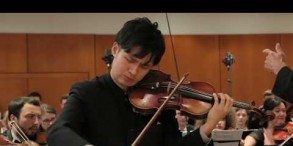Nihongo Helps to Improve Classwork?
Today's episode is not a genuinely Japanese material but Japanese enough to pass on to you.
A public school in Australia reports a fascinating set of findings i elementary school classwork. Believe it or not, this school adopted an overall program in teaching all classes both in English and Japanese with amazing results. How's that?
Three years ago Weller's Elementary School in East Queen's Land, Australia started to adopt a bilingual teaching program with Japanese and English. Today, 261 or 30% of the pupils are using both languages not only in language but all the rest of the subjects.
The school authorities are applying various means to draw the pupils' attention to learning subjects in Japanese. Abacus, a traditional calculating device in Japan, adds to the fan of learning mathematics in Japanese. The pupils have fun doing addition and subtraction in 8-10 digits with Abacus.
Ms. Sera Prescot, who has her eldest daughter and son in the 3rd and 2nd grades, respectably, acclaims highly the bilingual program adopted at the school, commenting:
"My children have learned to respect others through their study of Japanese culture. I'm very grateful."
The school authorities report that the bilingual classes produced better marks in the general achievement test in last May. Principal John Webster of Weller's Elementary School says:
"Bilingualism in teaching children prior to brain development is said to help cultivate more commonsensible personalities.
"Bilingualism is vital both for children and the school."
Good news fly fast. The school has grown in popularity to the point of the total enrollment gradually rising in the school district.
Weller's Elementary School plans to adopt a comprehensible bilingual curriculum by 2020.
Personally, I'm totally bilingual today and appreciate the merits of a deeper understanding of cross-cultural phenomena. The Japanese language helps elevate the level of such understanding. Why not start learning Japanese? (Nathan Shiga)










